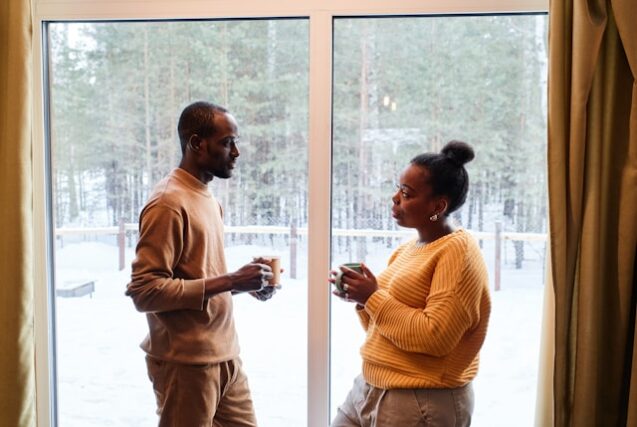Not every label in the queer community will immediately make sense to people outside of it, and that’s okay.

Understanding someone’s identity doesn’t always come instantly, but respecting it should. Labels aren’t about ticking boxes or explaining everything in a neat package. They’re about giving people language that feels accurate to their lived experience. Even if a term sounds unfamiliar or unusual, it’s real if someone says it is. Here are queer labels that might confuse some at first, but still carry deep personal truth—and deserve respect without a lecture.
1. Aegosexual

This label describes someone who experiences sexual attraction but doesn’t want to act on it or be involved in sexual activity themselves. They may enjoy fantasising, but when it comes to real-life intimacy, there’s a disconnect. To people unfamiliar with it, it might sound contradictory—how can you want something and not want it at the same time? But for aegosexual people, this split is real and valid. It’s a nuanced part of how they experience desire.
2. Demiromantic

A demiromantic person doesn’t experience romantic attraction unless they’ve formed a strong emotional bond with someone first. That connection isn’t just nice—it’s the foundation for attraction even to exist. It’s easy to misunderstand this as “just being picky” or slow to fall in love, but it’s not about pace—it’s about pattern. For demiromantic people, emotional closeness isn’t just part of romance, it’s the doorway to it.
3. Neopronoun user

Neopronouns like xe/xem, ze/zir, or fae/faer might seem made up to some—but that doesn’t make them any less meaningful. They’re often used by people who don’t feel that traditional he/she/they language captures their identity. Even if these pronouns are new to you, the point isn’t about grammar—it’s about respect. You don’t need to fully understand someone’s label to honour it in practice.
4. Greysexual

Greysexuality exists somewhere between asexual and sexual. People who identify this way might rarely feel sexual attraction, or only under very specific conditions. It can be confusing because there’s no clear, predictable pattern. However, greysexuality helps people make sense of a complex, often inconsistent experience—and naming that is empowering.
5. Lithromantic

Someone who is lithromantic feels romantic attraction, but doesn’t want it reciprocated. They may enjoy the idea of love or crushes, but if someone returns the feelings, it can feel uncomfortable or unwanted. It challenges a common assumption—that romantic attraction always leads to relationships. Lithromantic people remind us that desire can exist without needing to be acted on in the typical way.
6. Omnisexual

Omnisexuality is similar to pansexuality in that it involves attraction to all genders—but with an added emphasis on how gender may still play a role in who someone’s drawn to. While pansexuality is often described as being “gender-blind,” omnisexual people may recognise gender in their attraction, even if it’s broad. It’s a subtle but important distinction, and both identities are valid.
7. Quoiromantic

This label describes people who find the concept of romantic attraction confusing, hard to define, or not relevant to how they connect with other people. It’s not that they never feel love—it’s that they don’t always know how to categorise it. For quoiromantic people, relationships might not fit cleanly into “just friends” or “romantic partners.” They sit in the in-between, and they’re totally okay with that.
8. Aceflux

Aceflux people experience fluctuations in their level of sexual attraction. They might feel asexual one week and allosexual (non-asexual) the next. These shifts aren’t performative—they’re just part of how they’re wired. It’s often misunderstood as confusion or indecision, but it’s simply a dynamic identity. Labels like this help people track and validate how their attraction genuinely changes over time.
9. Abrosexual

This label refers to people whose sexual orientation changes over time. They might go from being attracted to women, to men, to no one at all, and it’s not a phase, it’s part of their identity. Abrosexuality challenges the idea that orientation is fixed and linear. For some, it really does move, and honouring that flexibility is part of honouring the person.
10. Gendervoid

People who identify as gendervoid feel the absence of gender entirely. They don’t feel partially masculine or feminine, or even androgynous—they just feel an emptiness where gender would normally sit. It might seem abstract, but for those who resonate with it, this label offers clarity and relief. It gives language to something that previously felt unnamed and unseen.
11. Novosexual

Novosexuality is the experience of having a sexual orientation that feels too complex to explain with existing labels. It recognises that not everyone fits neatly into the usual categories. This isn’t about avoiding labels—it’s about acknowledging when language still hasn’t caught up to someone’s experience. Novosexual people aren’t confused—they just need room to be fully themselves.
12. Requiessexual

This term is used by people who only experience sexual attraction after trauma has been processed or when they’re in a calm, emotionally regulated state. It acknowledges how trauma can complicate how attraction is felt. It’s not a universal experience, but for some, it’s a vital way to explain why their sexuality feels so different post-trauma. The label isn’t medical—it’s emotional, and deeply personal.
13. Frayromantic

Frayromantic people feel romantic attraction toward strangers or acquaintances, but that attraction fades once they develop emotional closeness. It flips the common narrative that connection deepens love. This label can sound cold at first, but it’s not about avoidance—it’s just a pattern some people experience. Understanding it helps them navigate relationships more honestly.
14. Cupiosexual
 Source: Unsplash
Source: Unsplash Cupiosexual people don’t feel sexual attraction, but still want a sexual relationship. It’s one of the more confusing ones at first glance—how can you want something you don’t feel drawn to? However, for many, it’s about emotional intimacy or shared closeness, not attraction in the traditional sense. This label challenges assumptions about what desire is supposed to look like.
15. Maverique

This gender identity describes someone who feels a strong sense of self that isn’t male, female, or even in between, but still distinctly gendered in its own unique way. Maverique people often say they feel gender as a personal force that exists outside the usual categories. It doesn’t “fit,” and that’s exactly what makes it powerful and real.




